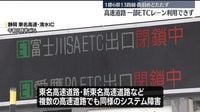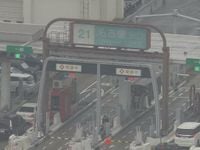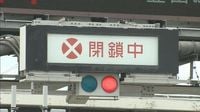On April 6, 2025, a significant malfunction in the Electronic Toll Collection (ETC) system disrupted traffic across multiple highways in the Tokai region of Japan, affecting several key areas and leading to widespread congestion.
The issue began around 0:30 AM, when equipment controlling the ETC system experienced a failure, as reported by NEXCO Central Japan. This malfunction rendered ETC unavailable at numerous toll booths in Aichi, Mie, Gifu, and even extending to Tokyo, impacting 74 locations across 1 metropolis and 6 prefectures.
Among the most affected toll booths were those at Nagoya IC and Okazaki IC on the Tomei Expressway, as well as Tsuchigi IC on the Chuo Expressway. As of 11:00 AM, the Suzuka Smart Interchange on the Shin-Meishin Expressway was also closed due to the ongoing issues.
As a result, traffic jams began to accumulate at various locations, particularly at the affected toll booths where drivers were forced to use general lanes manned by personnel, leading to delays. The nature of the malfunction meant that while some lanes remained operational, the inability to process ETC transactions quickly resulted in significant backups.
According to NEXCO Central Japan, the situation remains fluid, with no immediate timeline for when the system will be restored. This has left many commuters and travelers frustrated, as they navigate the unexpected delays.
In the Tokai region, the failure impacted over 30 locations across 11 routes, including major interchanges like Shinshiro IC on the Shin-Tomei Expressway and various others along the Tomei Expressway. The affected areas included not only the busy Nagoya IC and Okazaki IC but also locations such as Toyokawa, Toyota, and Kasugai ICs.
Traffic congestion was reported in various places, with many drivers expressing their frustrations on social media. "I’ve never seen traffic this bad at this hour!" one driver tweeted, highlighting the unusual nature of the delays.
As the day progressed, reports continued to emerge of increasing traffic jams, with some drivers taking to alternative routes to avoid the clogged highways. However, the backups persisted, indicating that the issue was more widespread than initially anticipated.
Experts have suggested that the malfunction could lead to longer-term impacts on travel plans, especially with the upcoming holiday season, which typically sees a spike in highway usage. Travelers are being urged to plan ahead and consider alternate modes of transportation or routes.
Officials from NEXCO Central Japan are working diligently to resolve the situation, but as of now, they have not provided a specific timeframe for when the ETC system will be fully operational again. They have assured the public that they are prioritizing the restoration of services.
The disruption has drawn attention to the reliance on automated toll collection systems in Japan, which have become increasingly common in recent years. While these systems offer convenience, incidents like this raise questions about contingency plans for such failures and the impact on road traffic.
As the situation develops, commuters are advised to stay updated through official channels and traffic reports. NEXCO Central Japan has committed to providing regular updates as they work towards a solution.
In summary, the malfunction of the ETC system on April 6 has caused significant disruption across major highways in the Tokai region, leading to traffic jams and closed interchanges. With restoration efforts underway, drivers are feeling the impact of this unexpected situation as they navigate the affected areas.







